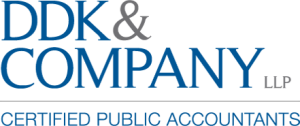
Business owners should get comfortable with their financial statements
Financial statements can fascinate accountants, investors and lenders. However, for business owners, they may not be real page-turners.
The truth is each of the three parts of your financial statements is a valuable tool that can guide you toward reasonable, beneficial business decisions. For this reason, it’s important to get comfortable with their respective purposes.
The balance sheet
The primary purpose of the balance sheet is to tally your assets, liabilities and net worth, thereby creating a snapshot of your business’s financial health during the statement period.
Net worth (or owners’ equity) is particularly critical. It’s defined as the extent to which assets exceed liabilities. Because the balance sheet must balance, assets need to equal liabilities plus net worth. If the value of your company’s liabilities exceeds the value of its assets, net worth will be negative.
In terms of operations, just a couple of balance sheet ratios worth monitoring, among many, are:
Growth in accounts receivable compared with growth in sales. If outstanding receivables grow faster than the rate at which sales increase, customers may be taking longer to pay. They may be facing financial trouble or growing dissatisfied with your products or services.
Inventory growth vs. sales growth. If your business maintains inventory, watch it closely. When inventory levels increase faster than sales, the company produces or stocks products faster than they’re being sold. This can tie up cash. Moreover, the longer inventory remains unsold, the greater the likelihood it will become obsolete.
Growing companies often must invest in inventory and allow for increases in accounts receivable, so upswings in these areas don’t always signal problems. However, jumps in inventory or receivables should typically correlate with rising sales.
Income statement
The purpose of the income statement is to assess profitability, revenue generation and operational efficiency. It shows sales, expenses, and the income or profits earned after expenses during the statement period.
One term that’s commonly associated with the income statement is “gross profit,” or the income earned after subtracting cost of goods sold (COGS) from revenue. COGS includes the cost of labor and materials required to make a product or provide a service. Another important term is “net income,” which is the income remaining after all expenses — including taxes — have been paid.
The income statement can also reveal potential problems. It may show a decline in gross profits, which, among other things, could mean production expenses are rising more quickly than sales. It may also indicate excessive interest expenses, which could mean the business is carrying too much debt.
Statement of cash flows
The purpose of the statement of cash flows is to track all the sources (inflows) and recipients (outflows) of your company’s cash. For example, along with inflows from selling its products or services, your business may have inflows from borrowing money or selling stock. Meanwhile, it undoubtedly has outflows from paying expenses, and perhaps from repaying debt or investing in capital equipment.
Although the statement of cash flows may seem similar to the income statement, its focus is solely on cash. For instance, a product sale might appear on the income statement even though the customer won’t pay for it for another month. But the money from the sale won’t appear as a cash inflow until it’s collected.
By analyzing your statement of cash flows, you can assess your company’s ability to meet its short-term obligations and manage its liquidity. Perhaps most importantly, you can differentiate profit from cash flow. A business can be profitable on paper but still encounter cash flow issues that leave it unable to pay its bills or even continue operating.
We can help
You can probably find more exciting things to read than your financial statements. However, you won’t likely find anything more insightful regarding how your company is performing financially. Contact a DDK Tax Advisor to help you generate best-in-class financial statements and glean the most valuable information from them.
